Technologies
Apple MacBook Air 15-Inch Review: The Best Portable Big Display Choice
You don’t need a Pro to get a larger screen size. The Air 15 is the more affordable option you should go for.

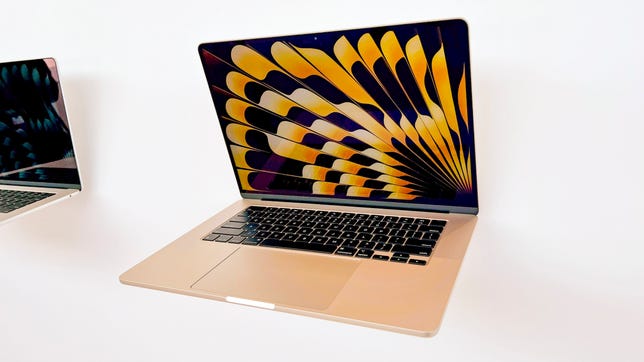
Apple MacBook Air (15-inch)
Like
- Big 15.3-inch screen size
- M2 processor still feels fast
- Costs far less than the Pro laptops
Don’t like
- Very few ports for its size
- No performance boost from the 2022 13-inch Air
Hello, big screen. When I opened the new MacBook Air 15-inch for the first time, it felt weirdly large. I recently bought the MacBook Air 13-inch M2 model, CNET’s pick for the best laptop overall, and I love it. It’s my do-everything computer, and it has the speed and battery life to handle whatever I take on.
No, I don’t need a MacBook Pro, and you probably don’t either. Apple’s M2 processor in the Air already exceeds the requirements of all but the most serious creative pros. And for the first time it’s now available in a roomy 15-inch laptop.

06:34
Putting a larger screen on the thinner, lighter and more affordable Air line is a no-brainer. Apple does this with iPhones, iPads and even to some extent the Apple Watch. It’s the same proposition here: pay a little more, get a bigger screen.
What the 15-inch Air doesn’t do is push the envelope further. A year after the M2 13-inch model, this is basically the same computer with a few tweaks. There’s a default 10-core GPU on the M2, which is an upgrade on the 13-inch version. There are better speakers (or at least more of them). And of course, more screen space and pixels.
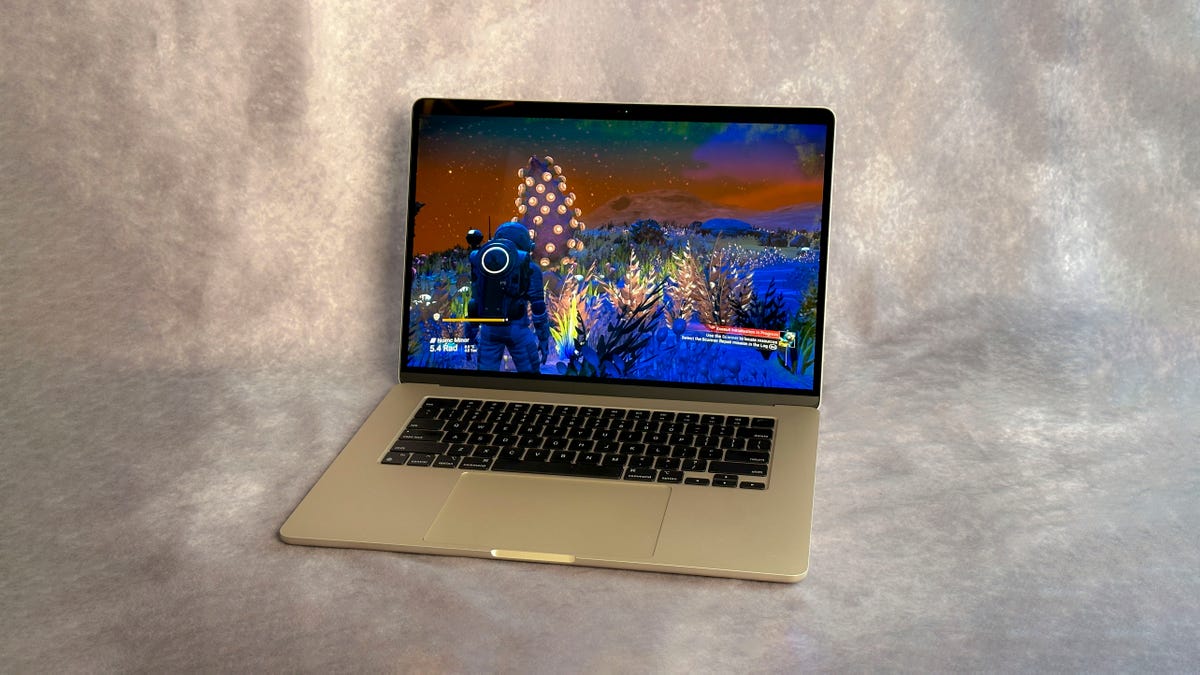
The MacBook Air 15-inch offers a big-screen Mac laptop that isn’t Pro-priced.
But the screen tech is the same (good, but not mini-LED like the Pro models), configurations are largely similar, and most notably, there are no extra ports on the Air’s larger body. That’s the biggest bummer here: two Thunderbolt USB-C type ports, a MagSafe charger and a headphone jack feels even more minimal on this long-edged machine. Why not one more port on the other side, at least? Or two?
The 15-inch Air starts at $1,299 compared with $1,099 for the 13-inch; a $200 uptick is exactly the price bump I’d expect. This whole package is way, way less expensive than the MacBook Pro equivalents. If I were buying a larger-screened Mac laptop, I’d start here first every time. But serious 4K video editors and graphics pros will likely find the Pro worth it if they can afford it.
I wrote this review on the 15-inch Air. I appreciate the extra screen space, and it’s great to have on my desk. But I don’t regret getting the 13-inch version, either.
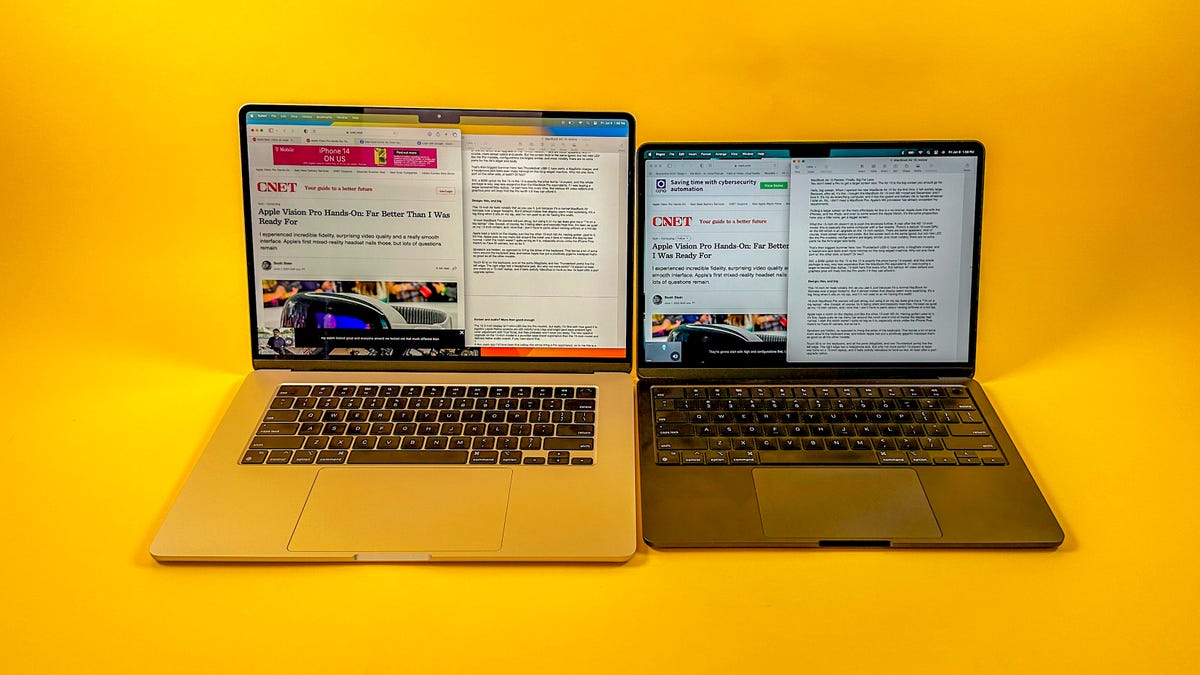
The Air 15 (left) next to the Air 13. Definitely bigger, but the same thickness.
Design: Thin and big
This 15-inch Air feels notably thin as you use it, just because it’s a normal MacBook Air thinness over a larger footprint. But it almost makes that display seem more surprising. It’s a big thing when it sits on my lap, and I’m not used to an Air having this width.
Owners of a 16-inch MacBook Pro will just shrug, but using it on my lap does give me a «I’m on a big laptop» vibe. Except, of course, for it being silent because of its fanless design, and basically heat-free. It’s been as quiet as my 13-inch version, and I love that I don’t have to panic about venting airflows or a hot lap.

The 1080p camera is perfectly fine, just like it was on the 13-inch model. It looks good on Zooms.
Apple kept a camera notch on the display, just like the 13-inch M2 Air. I’m used to it. It’s fine. Apple puts its top menu bar around the notch and it kind of makes the display feel normal. I wish the notch weren’t quite so big as it is, especially since, unlike the iPhone Pros, there’s no Face ID camera, but so be it.
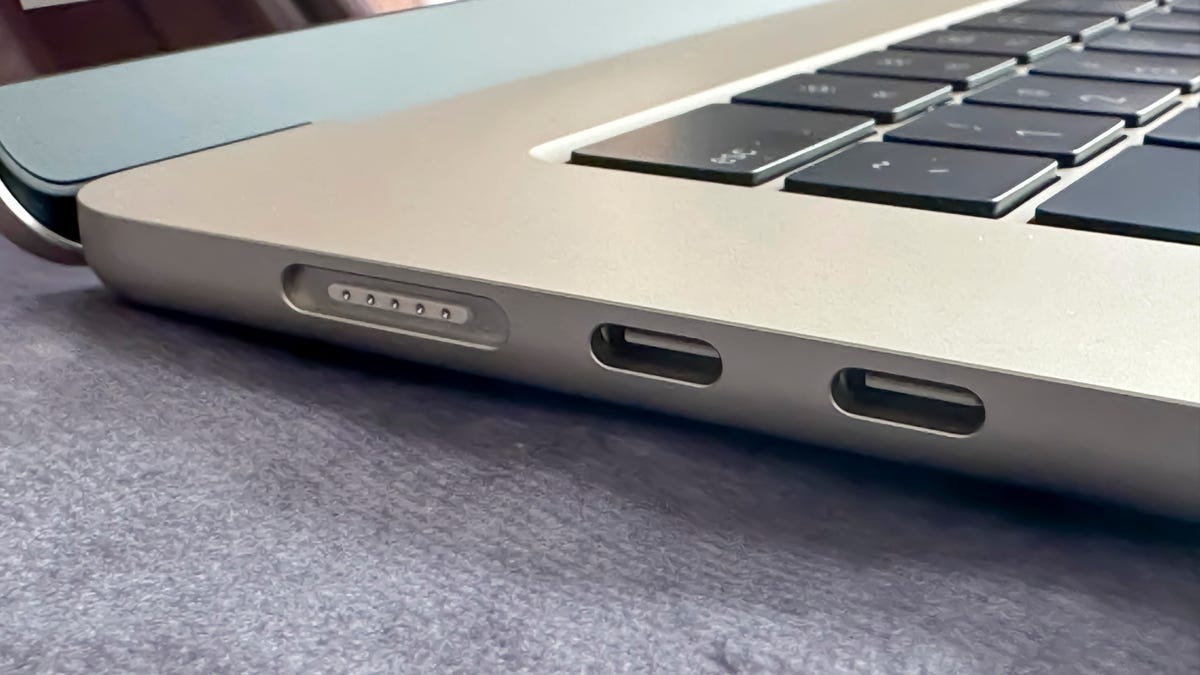
These are the only ports you get, other than a headphone jack. Same as on the 13-inch model.
Speakers are hidden, as opposed to lining the sides of the keyboard. That leaves a lot of extra room around the keyboard area, and below Apple has put a positively gigantic trackpad that’s as good as all the other models.
Touch ID is on the keyboard, and all the ports (MagSafe, and two Thunderbolt ports) line the left edge. The right edge has a headphone jack. But why not more ports? I’d expect at least one more on a 15-inch laptop, and it feels awfully ridiculous to have so few. At least offer a port upgrade option.
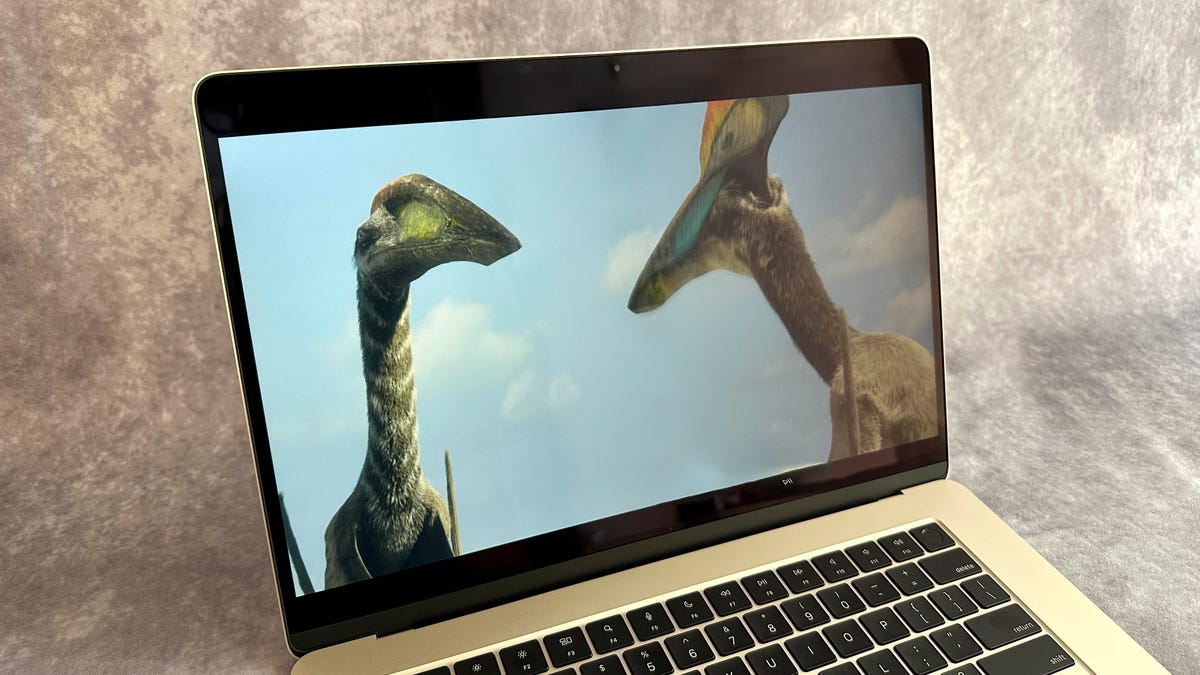
This isn’t mini LED, but it’s perfectly fine for movies and games.
Screen and audio? More than good enough
The 15.3-inch display isn’t mini-LED like the Pro models, but really, I’m fine with how good it is. Apple’s Liquid Retina screens are still colorful and crisp and bright (and have ambient light color adjustment with True Tone), but they probably won’t blow you away. The new speaker upgrade on the 15-inch model is a punchier bass boost experience than the 13-inch model and delivers better audio overall, if you care about that.
A few years ago I’d have called this whole thing a Pro experience, so to me this is a pretty nice Air package overall.

I still like how bag-friendly the 13-inch one is.
Price equation: Worth getting the 15 if you’re spending up for extras
It turns out that the step-up 8GB RAM/512GB storage version of the 15-inch Air is $1,499, while the 13-inch Air’s equivalent is $1,399. Only spending an extra $100 for the larger screen seems like a logical bet for anyone wanting more room to work or something easier on the eyes.
The price gap is $200 for the base model, which also isn’t huge, but I do prefer the 13-inch Air for its portability. I love its compact lap feel and good-enough screen size for my needs. But, putting it next to the 15-inch Air, it’s clear that you can put apps side-by-side more easily on the 15-inch model. My wife looked at both on a table and said she’d prefer the 15 if she were at a desk a lot doing work.

But either way, these laptops are over $1,000 less than the 16-inch-screen MacBook Pro. These are the easiest way to get a great larger-screened MacBook now, and they’re worth it. One note: the 15 now has a year-old M2 processor. Apple’s M2 was only a moderate increase in performance over the breakthrough advance of the M1 before it when it arrived last summer. Will a future M3 take another leap? Maybe you shouldn’t worry. Apple’s speed gains on the M-series chips over the Intel models have been so good that they still feel fantastic.
MacBook Air 15 or 13? Take your pick, either’s fine. At this point in 2023, these MacBook Airs feel like the safest bet in Apple’s laptop lineup.
Technologies
This $199 Bose QuietComfort Headphones Deal Is the Best I’ve Seen
With a $150 discount, this Bose QuietComfort headphones deal is impossible to beat.
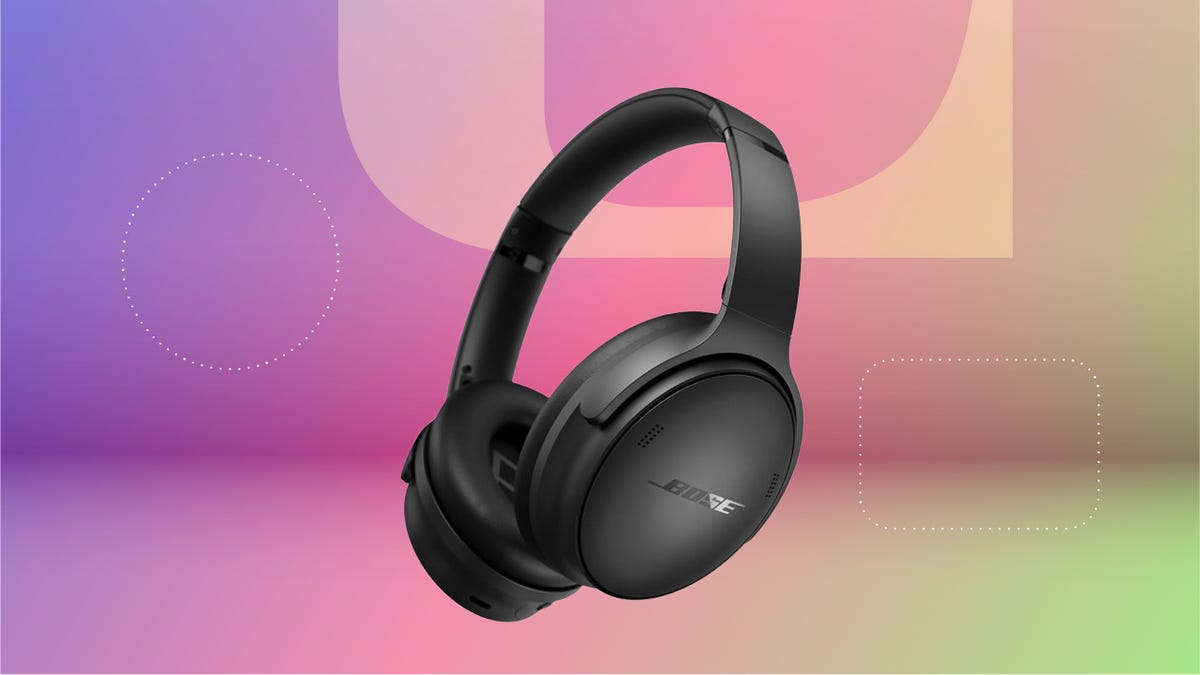
We’re big fans of personal audio gear, especially high-quality headphones. The Bose QuietComfort headphones definitely fall into that category. In fact, CNET’s expert editors rank them as some of the best noise-canceling headphones on the market today. But that doesn’t mean you have to pay the retail price — right now, both Amazon and Walmart are offering them for a best-ever price.
Strike now and you’ll snag a pair of Bose QuietComfort wireless headphones at a great discount of $150. Walmart is offering them for just $199 in select colors. But if you want more variety, Amazon is price-matching across the entire color range. Just keep in mind that I can’t promise that either of these deals will last for long.
The QuietComfort headphones include noise cancellation and have Quiet and Aware modes, so you can focus as needed or let some ambient sound in when you’re taking walks or need to know what’s happening around you.
Hey, did you know? CNET Deals texts are free, easy and save you money.
Adjustable EQ lets you customize your sound preferences, and a battery life of up to 24 hours makes these headphones the perfect travel companion. Need a battery boost? It only takes a 15-minute charge to get an extra battery life of up to 2.5 hours.
If this isn’t quite the product you’re looking for, check out our list of the best wireless headphones to find the right pair for you. There are plenty of different options from various manufacturers, with something for everyone.
HEADPHONE DEALS OF THE WEEK
-
$300 (save $51)
-
$299 (save $151)
-
$220 (save $180)
Why this deal matters
Bose makes some of the best headphones on the market. This deal offers QuietComfort headphones for just $199 after slashing $150 off the regular price. That’s the lowest price I’ve seen on these headphones, and a massive discount. Just be sure to get your order in soon.
Join Our Daily Deals Text Group!
Get hand-picked deals from CNET shopping experts straight to your phone.
By signing up, you confirm you are 16+ and agree to receive recurring marketing messages at the phone number provided. Consent is not a condition of purchase. Reply STOP to unsubscribe. Msg & data rates may apply. View our Privacy Policy and Terms of Use.
Technologies
The Best Earbuds for Samsung Users Are Just $165, but for How Long?
The Samsung Galaxy Buds 3 look and sound great, and this deal smashes the usual $250 asking price.
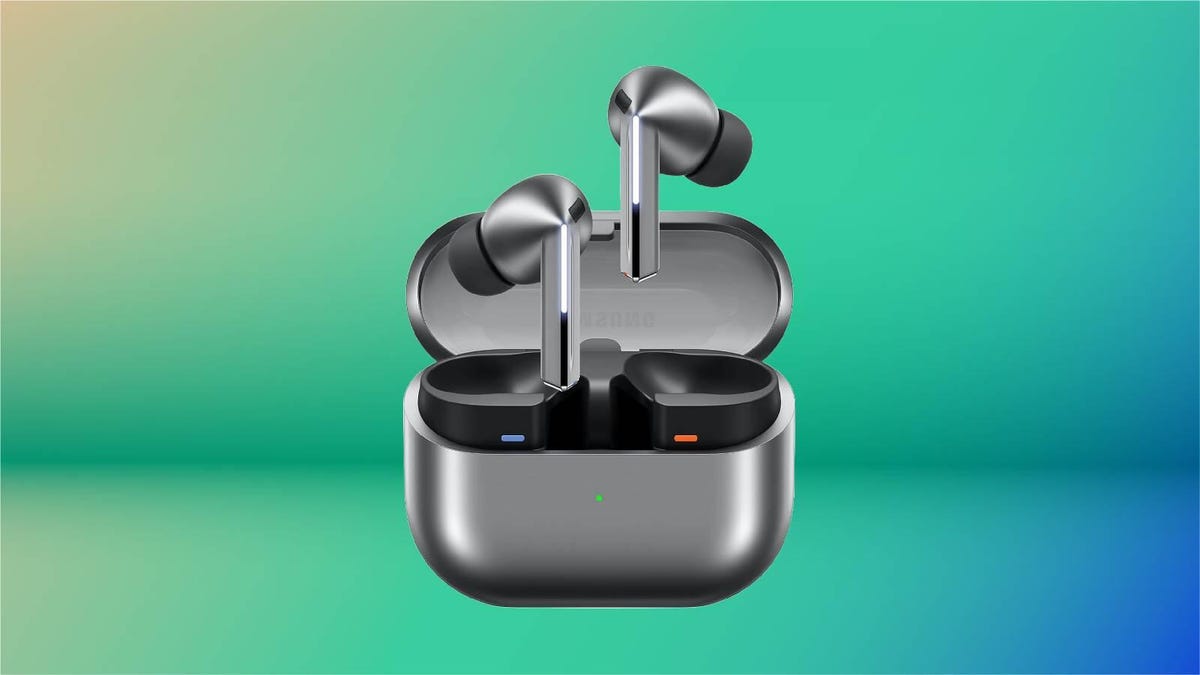
While it’s true that Apple’s latest AirPods Pro 3 tend to dominate the conversation when discussing premium Bluetooth earbuds, they aren’t the only option. In fact, if you’re ensconced in Samsung’s ecosystem, they’re obviously not going to be a great fit. The solution? Samsung’s Galaxy Buds 3 Pro, which you can get on sale right now for just $165 on Amazon.
It isn’t quite the cheapest price we’ve seen, but it isn’t all that far off. And while they might fall slightly during the upcoming Black Friday sales, we don’t expect them to go far beyond their lowest price of around $150.
There are plenty of options out there for non-Apple users looking for a good pair of wireless earbuds. To give you one example, CNET’s own list of the best wireless earbuds named Sony’s WF-1000XM5 as the best pair on the market. Elsewhere on that list, though, CNET also named the Galaxy Buds 3 Pro as the best option for Samsung users, and it’s not hard to see why.
Hey, did you know? CNET Deals texts are free, easy and save you money.
These earbuds boast a number of features tailored to folks with Samsung Galaxy or any other sort of Android smartphone, most notably support for the «high-resolution» Samsung Seamless Codec for audio quality. Those users will also have access to the Galaxy Wear app, which is the exclusive method the company uses to push through updates. While you can technically connect these buds to an iPhone, you won’t find the Wear app in Apple’s App Store, leaving the experience far from ideal.
Beyond those exclusive perks for Android users, CNET’s audio guru Dave Carnoy said in his review of the Galaxy Buds 3 Pro that you can expect a «lightweight and comfortable» feel, excellent audio and call quality, and some solid noise-cancellation to boot. The primary flaw he noted was the price, which this deal definitely helps with.
Why this deal matters
The Galaxy Buds 3 Pro are the top-of-the-line when it comes to Samsung earbuds, which means that most of the time you can expect a top-of-the-line price tag to match. Now, however, you can grab yourself a pair for considerably less.
Technologies
Today’s NYT Mini Crossword Answers for Friday, Oct. 31
Here are the answers for The New York Times Mini Crossword for Oct. 31.

Looking for the most recent Mini Crossword answer? Click here for today’s Mini Crossword hints, as well as our daily answers and hints for The New York Times Wordle, Strands, Connections and Connections: Sports Edition puzzles.
Happy Halloween! Today’s NYT Mini Crossword features the word «BOO!» in a square on the last line of the grid. That’s not just a Halloween greeting, it’s part of the answer that spans both 9-Across and 10-Across, so read the answers to both those with the «boo» in the middle to solve it. And then, the puzzle-makers use that «BOO!» again, to help make the answer to 3-Down. Read on for all the answers, complete with added boos. And if you could use some hints and guidance for daily solving, check out our Mini Crossword tips.
If you’re looking for today’s Wordle, Connections, Connections: Sports Edition and Strands answers, you can visit CNET’s NYT puzzle hints page.
Read more: Tips and Tricks for Solving The New York Times Mini Crossword
Let’s get to those Mini Crossword clues and answers.
Mini across clues and answers
1A clue: Buffalo hockey player
Answer: SABRE
6A clue: «I’ll have the ___» (frequent customer’s order)
Answer: USUAL
7A clue: Contents of a volcano
Answer: MAGMA
8A clue: Adjust to a new environment
Answer: ADAPT
9A clue: With 10-Across, last car on a train
Answer: CA
10A clue: See 9-Across
Answer: SE
(The «Boo!» shown in the grid helps make the word CABOOSE)
Mini down clues and answers
1D clue: «Poison» shrub
Answer: SUMAC
2D clue: Carne ___
Answer: ASADA
3D clue: Imaginary cause of fear
Answer: BUGA
(The «Boo!» shown in the grid helps make the word BUGABOO)
4D clue: Accessible alternatives to staircases
Answer: RAMPS
5D clue: Make extremely happy
Answer: ELATE
-

 Technologies3 года ago
Technologies3 года agoTech Companies Need to Be Held Accountable for Security, Experts Say
-

 Technologies3 года ago
Technologies3 года agoBest Handheld Game Console in 2023
-

 Technologies3 года ago
Technologies3 года agoTighten Up Your VR Game With the Best Head Straps for Quest 2
-

 Technologies4 года ago
Technologies4 года agoVerum, Wickr and Threema: next generation secured messengers
-

 Technologies4 года ago
Technologies4 года agoBlack Friday 2021: The best deals on TVs, headphones, kitchenware, and more
-

 Technologies4 года ago
Technologies4 года agoGoogle to require vaccinations as Silicon Valley rethinks return-to-office policies
-

 Technologies4 года ago
Technologies4 года agoOlivia Harlan Dekker for Verum Messenger
-

 Technologies4 года ago
Technologies4 года agoiPhone 13 event: How to watch Apple’s big announcement tomorrow
